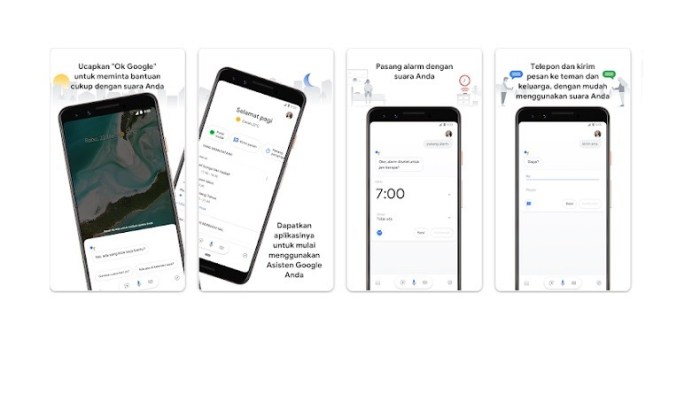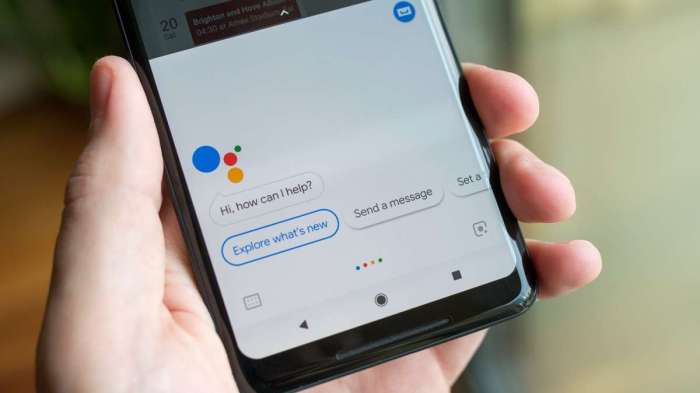Google is removing 17 underutilized assistant features. This might sound like a small change, but it’s actually a big deal. It shows that Google is focusing on making their assistant more streamlined and efficient. But what does this mean for users? Will they miss these features? And what does it tell us about the future of Google Assistant?
Think about all the things you use Google Assistant for – setting reminders, playing music, checking the weather, even controlling your smart home. Now imagine some of those features disappearing. That’s the reality for users who relied on these 17 underutilized features. While Google claims these features weren’t used enough, it’s still a change that might leave some users feeling frustrated.
Reasons Behind Google’s Decision
Google’s decision to remove 17 underutilized Assistant features stems from a strategic focus on streamlining the user experience and prioritizing features with demonstrable value. The company aims to enhance user satisfaction by ensuring that Assistant remains a robust and intuitive platform, offering a seamless and efficient interaction with users.
Reasons for Feature Removal
Google’s rationale for removing these features is based on a combination of factors, including user engagement data, industry trends, and an overall commitment to maintaining a clean and effective user interface.
- Low User Engagement: Google’s analysis revealed that the 17 features in question were seldom used by users. This lack of engagement suggests that these features were not fulfilling a significant user need or were not effectively integrated into the Assistant’s overall functionality.
- Overlapping Functionality: Several of the removed features offered functionality that was already provided by other existing features within the Assistant ecosystem. Eliminating these redundant features contributes to a more streamlined and user-friendly experience by preventing confusion and reducing clutter.
- Focus on Core Functionality: Google prioritizes its efforts on developing and refining core features that provide the most value to users. By removing less-used features, Google can dedicate resources to enhancing and expanding the functionality of its core offerings, ensuring a consistently evolving and user-centric platform.
Alignment with User Feedback and Industry Trends
Google’s decision to remove these features aligns with industry trends towards simplifying user interfaces and prioritizing core functionalities. In a world saturated with apps and digital tools, users increasingly favor platforms that are easy to navigate and offer a focused user experience. Google’s decision reflects this trend, recognizing that users value efficiency and effectiveness over a plethora of underutilized features.
The Future of Google Assistant
Google’s decision to streamline its Assistant features by removing underutilized ones signals a shift in focus. This move indicates a strategic direction towards prioritizing features that are actively used and have the potential to enhance user experience. The future of Google Assistant will likely be characterized by a more focused and refined approach, prioritizing features that align with user needs and trends.
Prioritizing Features
Google’s decision to remove underutilized features suggests a future where the focus will be on features that deliver real value to users. This means prioritizing features that:
- Enhance user productivity and efficiency
- Improve accessibility and convenience
- Offer personalized experiences
- Integrate seamlessly with other Google services
Potential Roadmap for Google Assistant
Based on current trends, a potential roadmap for Google Assistant’s development could include:
- Enhanced Multimodal Interactions: Google Assistant could integrate seamlessly with other devices, such as smart home appliances, wearables, and even cars. This would enable users to interact with the Assistant through voice, touch, gestures, and even visual cues.
- Personalized Experiences: Leveraging user data and AI, Google Assistant could provide highly tailored experiences. This could include personalized recommendations, reminders, and even proactive assistance based on individual preferences and routines.
- Advanced AI Capabilities: Google Assistant could become more intelligent and capable by incorporating advanced AI features like natural language understanding, sentiment analysis, and contextual awareness. This would enable the Assistant to understand user intent more accurately and respond in a more human-like manner.
- Focus on Privacy and Security: Google could emphasize privacy and security features to ensure user data is protected. This could include enhanced data encryption, transparent data usage policies, and robust security measures.
User Perception and Feedback: Google Is Removing 17 Underutilized Assistant Features
The removal of 17 underutilized features from Google Assistant has sparked a mixed reaction from users. While some appreciate the streamlining and focus on core functionalities, others express disappointment and concern about the loss of features they found useful.
User Sentiment Analysis, Google is removing 17 underutilized assistant features
Online forums and social media platforms have become hubs for users to voice their opinions on the changes. Analyzing user feedback reveals a spectrum of sentiment, ranging from positive to negative, with a significant portion remaining neutral.
| Sentiment | Description | Examples |
|---|---|---|
| Positive | Users appreciate the focus on core functionalities and a more streamlined experience. They see the removal of underutilized features as a positive step towards a more efficient and user-friendly assistant. |
|
| Negative | Users express disappointment and frustration over the loss of features they found valuable, even if they were not widely used. They argue that the removal limits the versatility and functionality of the assistant. |
|
| Neutral | Many users remain neutral, acknowledging the changes while expressing neither strong approval nor disapproval. They may have not used the removed features or simply haven’t formed a strong opinion yet. |
|
The removal of these features is a clear sign that Google is prioritizing efficiency and user experience. They’re focusing on the features that people actually use, and that’s a good thing. But it’s also a reminder that technology is constantly evolving, and what’s considered essential today might be obsolete tomorrow. As Google continues to refine its assistant, we can expect to see even more changes in the future. It’ll be interesting to see how these changes impact the way we interact with our devices and what new features will emerge to take their place.
Google’s decision to axe 17 underutilized Assistant features might seem like a simple streamlining move, but it highlights a broader trend in tech: focusing on what truly matters. This is especially relevant in the current cybersecurity landscape, where vulnerabilities can be exploited by sophisticated attackers. The NSA is currently tracking Ivanti cyberattacks, as hackers target the US defense sector , demonstrating the need for robust security measures and a laser focus on essential features, just like Google is doing with its Assistant.
 Standi Techno News
Standi Techno News

